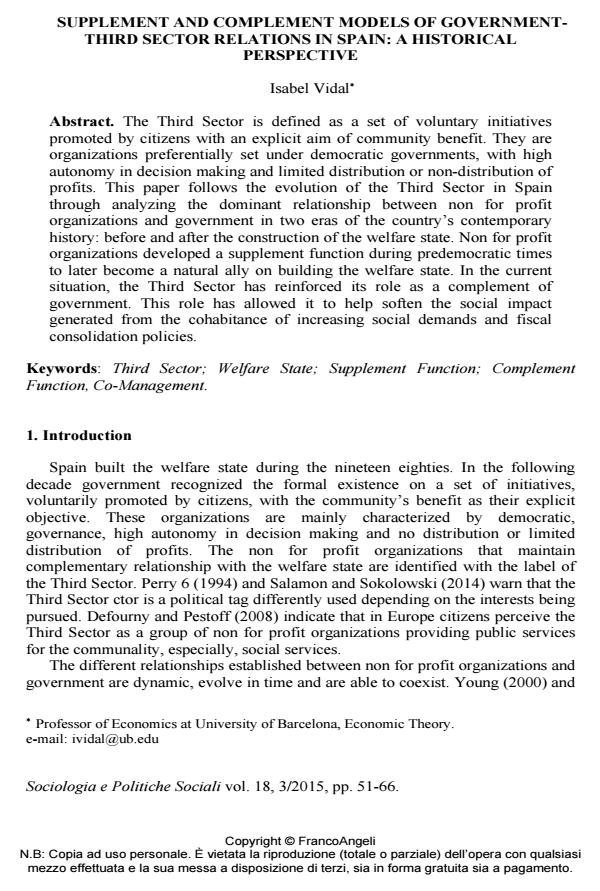Supplement and complement models of governmentthird sector relations in spain: a historical perspective
Journal title SOCIOLOGIA E POLITICHE SOCIALI
Author/s Isabel Vidal
Publishing Year 2016 Issue 2015/3
Language Italian Pages 16 P. 51-66 File size 84 KB
DOI 10.3280/SP2015-003004
DOI is like a bar code for intellectual property: to have more infomation
click here
Below, you can see the article first page
If you want to buy this article in PDF format, you can do it, following the instructions to buy download credits

FrancoAngeli is member of Publishers International Linking Association, Inc (PILA), a not-for-profit association which run the CrossRef service enabling links to and from online scholarly content.
The Third Sector is defined as a set of voluntary initiatives promoted by citizens with an explicit aim of community benefit. They are organizations preferentially set under democratic governments, with high autonomy in decision making and limited distribution or non-distribution of profits. This paper follows the evolution of the Third Sector in Spain through analyzing the dominant relationship between non for profit organizations and government in two eras of the country’s contemporary history: before and after the construction of the welfare state. Non for profit organizations developed a supplement function during predemocratic times to later become a natural ally on building the welfare state. In the current situation, the Third Sector has reinforced its role as a complement of government. This role has allowed it to help soften the social impact generated from the cohabitance of increasing social demands and fiscal consolidation policies.
Keywords: Third Sector; Welfare State; Supplement Function; Complement Function, Co-Management.
Isabel Vidal, Supplement and complement models of governmentthird sector relations in spain: a historical perspective in "SOCIOLOGIA E POLITICHE SOCIALI" 3/2015, pp 51-66, DOI: 10.3280/SP2015-003004